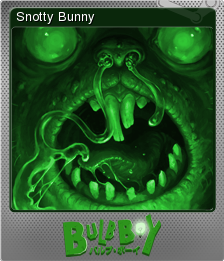

It makes sense their reaction to sneeze would be triggered more often than the rest of us. Babies have little tiny nose holes, and they get blocked all the time. It’s not necessarily allergies or a cold. The reason your baby is sneezing a lot is probably not what you think. Reasons for Newborn Sneezing a Lotĭon’t fire up the vaporizer just yet, Captain Vicks. And I think we can agree the farts or “gas bombs” (as my very Texas grandmother used to call them) are gifts, each and every one. The Cleveland Clinic assures moms sneezing is normal for newborns, along with burping, yawning, and baby hiccups. But in general terms, it is totally normal for newborn babies to sneeze, even at times that might not always make sense. If they’re running a fever or seem like their breathing is labored, call a pediatrician immediately. But it can’t be said enough you know your baby better than anyone. Newborns do really sneeze more often than the rest of us. No, it’s not just you and your baby, and you aren’t suffering from post-delivery brain fog. Because dogs, especially, will eat large amounts, it is important to keep pets and these plants apart.Moms of newborns - especially first-time moms - might be shocked by just how many weird noises those little goofballs make, especially the newborn sneezing.

The plant names that are listed in bold typeface are known to be dangerous to animals (dogs and cats). Some plants that are not a problem to humans can be a problem for animals. Also children can choke on a plant piece and have gagging or choking. Keep in mind that even non-toxic plants can cause vomiting in humans and animals.

The first list is alphabetical by common name and the second list is alphabetical by Latin or scientific name. The plants in this list are considered to be safe to humans. If you are not in California, call 1-80 to be connected to your nearest poison control center. The California Poison Control System is available 24 hours a day by calling 1-80. This is a guide to safe plants but it should not be used as a substitute for calling the poison center if a person or an animal has eaten a plant. Then call the California Poison Control System at 1-80 for more help. Try to get the common name and the Latin scientific name. If you do not know the name of the plant, take the plant or a part of the plant with leaves, berries or flowers to a reputable plant nursery for a positive identification. A call to the poison center about an unknown plant described as having big, shiny green leaves is not enough information to know what the plant is. There are over 1,000,000 species of plants. Poison center staff cannot identify plants over the phone from the description of the plant. However, you must have a name of the plant (either the common name or the Latin name) to get the most reliable specific information. If your child is being cared for at a relative’s house or daycare, it is important to know if they have dangerous plants to which your child could be exposed. Keep the name tags that come with new plants attached for future identification. It is essential to know the names of the plants in your house and in your yard. Reactions to plants can depend on factors such as the age and size of the patient, health factors such as allergies and the amount of the exposure.Īlways call the poison center for up-to-the-minute treatment advice.

It is important to know which species you have and to check both the non-toxic plant list as well as the toxic plant list to make sure the plant you have is safe.Įach situation is unique. Some may be safe and some may be dangerous. The common names of plants can refer to several different species. To prevent accidents, be aware of the potential dangers of plants. But children are not the only victims of plant poisoning-adults, pets and farm animals can also be exposed to plants. Nationally, almost eight out of 10 plant ingestions occur in young children. Plants are a major cause of poisoning in children under the age of 6 years.


 0 kommentar(er)
0 kommentar(er)
